Scenes From IBM's Partner Leadership Conference
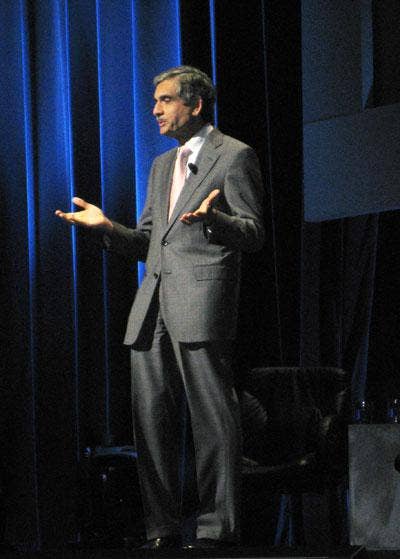
Early this month, IBM held its first annual IBM Partner Leadership Conference in Los Angeles. In a departure from its previous PartnerWorld events, IBM said it brought in about 1,000 C-level executives from its solution provider and technology partners, and promised other more focused events throughout the year for partners' technical and sales staff.
The first keynote speaker was Ravi Marwaha, general manager of IBM global business partners, who called the attendees "an elite group" because previous partner conferences under the PartnerWorld name had 5,000 to 6,000 participants.
About one-third of IBM's revenue came from the company's business partners in 2007, Marwaha said. Business partners accounted for about one-half of IBM's small and midsize business revenue, he said.
Marwaha said IBM wants to lead with partners with three main strategies in the coming year.
The first is growth markets. IBM signed up about 10,000 new business partners in 2007, of which 3,000 were from the BRIC (Brazil, Russia, India, and China) countries. The company also recently started certifying partners for cross-border business. "We want to let our partners pursue overseas business outside their own country's borders," he said.
The second is the new enterprise data center. IBM wants its business partners' help in transforming thousands of them worldwide with more green, efficient infrastructures, and promised to provide the resources to help partners invest in the needed skills and expertise.
The third is the midmarket, where IBM is passing more system and software leads to partners, increasing its lead management capabilities, increasing incentives, investing $100 million in demand and co-marketing, packaging services that can be sold the same way as any product, and making acquisitions.
Marwaha then surprised the audience by announcing his retirement and introducing his successor, Rich Hume.
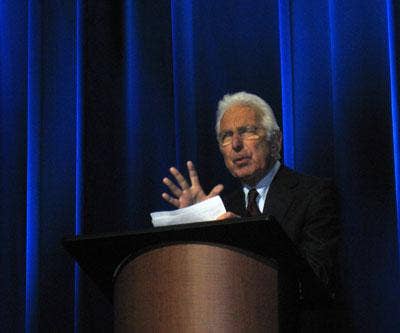
Next on stage was Warren Bennis, founding chairman of The Leadership Institute at the University of Southern California.
Keeping with the leadership theme of the conference, Bennis told attendees what it meant to be a leader. "Leadership is having inspired followers, because without inspired followers, no amount of leadership will work," he said.
The four basic factors to determining a successful leader, Bennis said, are passion for what he or she is doing, the ability to both respect and honor others, character, and adaptive capacity.
By adaptive capacity, Bennis said a leader has to be "open to the unbidden," which he defined as watching for opportunities relative to what the leader's team does. Adaptive capacity also includes the expectation of future success, and contextual intelligence, which means knowing the territory and especially knowing who the clients are.
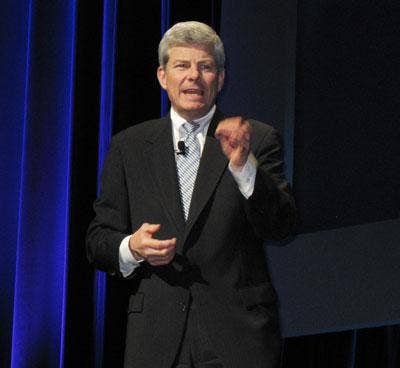
Bill Zeitler, senior vice president and group executive for IBM's SystemsTechnology Group, came on-stage to introduce the next speaker, Frank Gens of IDC.
Little did anyone in the audience know, Zeitler was making one of his last on-stage appearances for IBM. A couple days after the IBM Partner Leadership Conference, IBM said that Zeitler was retiring.
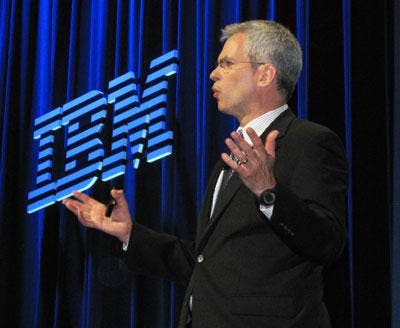
The small and midsize business market may not be as big as the enterprise market in terms of IT spending, but it is where the biggest solution provider opportunities lie, said Frank Gens, senior vice president and chief analyst at IDC, a Framingham, Mass.-based analyst firm.
Small and midsize businesses account for about 34 percent of IT spending worldwide, Gens said. However, they also account for about 65 percent of worldwide GDP (gross domestic product) and about 70 percent of worldwide employment.
"If we can just get half of that gap filled, that would be an additional $220 billion in IT spending opportunities," he said.
Like other businesses, small and midsize businesses need affordable technology and business solutions, Gens said. The difference, he said, is that smaller companies need simplicity. "So instead of SMBs being a backwater of opportunities, it's now an epicenter of success," he said.
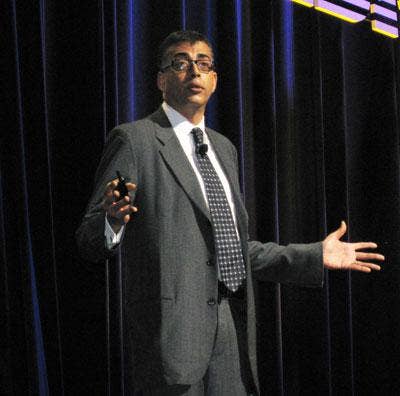
The second day of the conference started with welcoming comments from Hume, the new general manager of IBM global business partners, who by now was running the show. In keeping with IBM's push to help its business partners expand their international business, Hume introduced the first speaker of the day, Paknaj Ghemawat, professor of global strategy at the IESE Business School in Barcelona, Spain.
Ghemawat said that, contrary to popular belief, cross-border integration is exaggerated.
For instance, he said only 2 percent of all calling minutes worldwide are for international calls, only 3 percent of the world's population are immigrants, only 5 percent of students worldwide are studying outside of their country of origin, only 12 percent of direct investment is cross-border, only 15 percent of stock investment is cross-border, and trade accounts for only 26 percent of the world's GDP (gross domestic product).
"While the world gets closer, it's still a long, long way from being integrated," he said.
Business partners looking to expand their business internationally can learn from retail giant Wal-Mart, which discovered that the farther it expanded from its original Bentonville, Ark. headquarters, the lower its margins. In fact, he said, Wal-Mart found business conditions in neighboring Alabama so different from Arkansas that it had to appoint a special team to look at how to localize its expansion.
Because of that, Wal-Mart changed to what it called the "AAA" strategy.
The first "A," adaption, meant learning to adjust to local conditions, including changing merchandising policies based on local markets. For instance, Ghemawat said, it went into India with its first joint venture because of Indian law that prevented foreign ownership of multi-store chains.
The second "A," aggregation, overcame the restraints caused by policies which varied from market to market by grouping countries by regions with regional headquarters to take advantage of economies of scale.
The third "A," Arbitrage, exploited local differences. Ghemawat said that Wal-Mart uses China mainly for sourcing profits, which exceed the profits of its other international operations by several times.
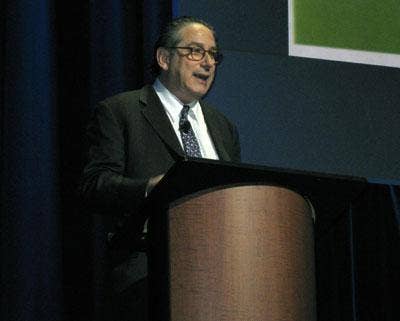
Ghemawat's look at internationalization of business was followed by a presentation on how CIOs' thoughts are changing from Harvey Koeppel, executive director of the Center for CIO Leadership, an organization in which IBM has invested.
Koeppel said that CIOs surveyed in 2007 said they felt they did not have a seat at the decision-making table within their organizations in 2006, mainly because other executives did not really know much about the CIO's role in a company.
That changed quickly. Eighty percent of CIOs said that in 2007 they believed themselves to be valued members of their companies' leadership teams. "The big takeaway was that CIOs and their business partners felt they were much more involved ," Koeppel said. "There was significant recognition that internal and external satisfaction among CIOs is way up."
As CIOs step into more of a leadership role, it is important that business partners do so as well, Koeppel said. "No more talking about MIPs or tons," he said. "You need to talk with CIOs about what it takes to make their companies more profitable."
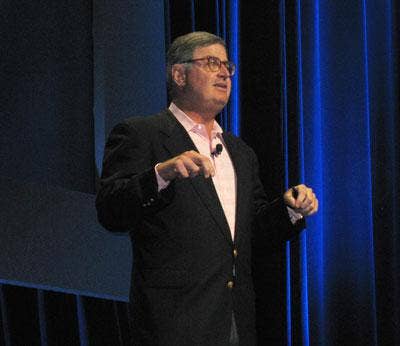
Sam Palmisano, chairman, president, and CEO of IBM, said during his keynote that solution providers who want to grow in the face of a changing business environment will find the most success by thinking global with solutions for smaller and midsize customers.
Palmisano said that discussing the adjustments partners need to make in the face of the major changes taking place in the worldwide IT market far overshadows the need to talk about selling new things. "Because the world is changing, we need to make some adjustments," he said. "We need to make some shifts. We need to make the kind of investments to capture (new opportunities)."
Such changes are not cyclical or quarterly happenings, Palmisano said. "These shifts that are occurring are fundamentally real, and creating different kinds of opportunities for all of us around the world," he said.
The first is the emergence of global economies, where potential clients in countries around the world represent a new level of skills and a new level of increased demand for services.
The second, which is very complimentary, is a dramatic shift in the computing model away from the PC and towards networked infrastructures, which is enabling a worldwide talent pool to participate in the global expansion and enabling businesses to quickly go after emerging opportunities. The third, he said, is customer focus on innovation and integration, a focus that enables IBM and its solution providers to create new value and integrate on a global scale.
At the end of the day, CIOs are trying to set an IT agenda that is transformational for their companies, Palmisano said. "Yes, they need IT infrastructure, and they need software, and they need servers, and they need everything to get it done, but that's not the outcome," he said. "That's just the input."
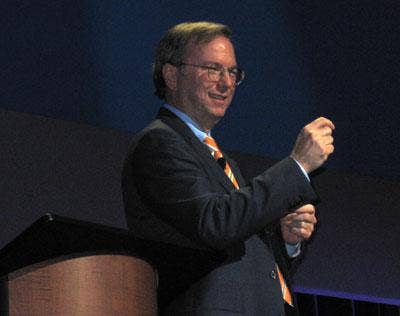
Rounding out the second day was Eric Schmidt, chairman and CEO of Google, who told the audience that he has always had tremendous respect for the underlying architecture and technology approach at IBM.
"So, one day, Sam [Palmisano] called me and said, 'we'd like your thoughts about distributed computing,'" Schmidt said. "And I said, 'Well, I think this, and this, and this,' and—well, Sam is a pretty nice guy, and he said, 'We've already done this.' And all of a sudden, I realized, these guys are ahead of the game. They've actually thought through the consequences of this new life that we're building."
IT continues to develop at a fast pace, Schmidt said. He cited Moore's Law, which states that processor performance doubles every 18 months, and Kryder's Law, which states that hard drive capacity doubles every 12 months.
Such speed has allowed IT to scale, sometimes to the point where it is more than can be used. "By 2020, you could have a device with 85 years worth of video stored in it," Schmidt said. "But before you watch it all, you'll be dead."
Instead, businesses have to find ways to scale IT to the needs of customers, Schmidt said.
"IT is very globalized, with each geographic area imparting its own culture on how it uses IT," he said. "For instance, during the current worldwide rice shortage, one way rice farmers in places like Thailand use IT is to get on their cell phones to find out the best place to sell their rice to cut out the middleman. And fishermen in Southeast Asia use cell phones to find out which harbor is offering the best prices for their fish."